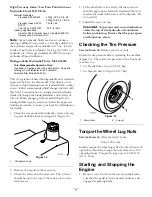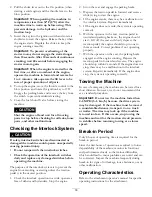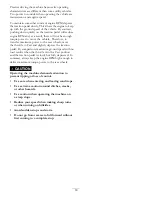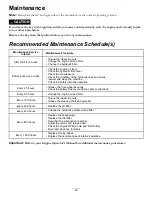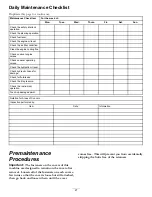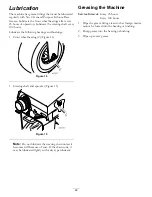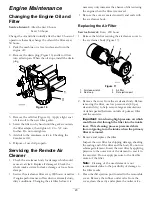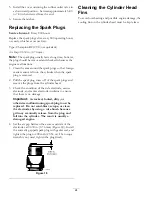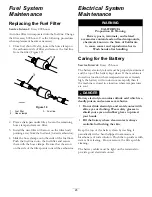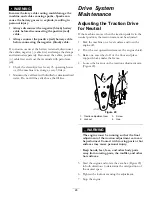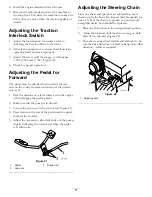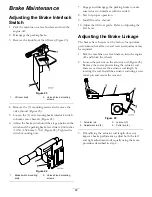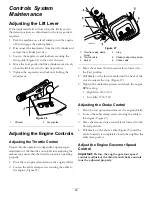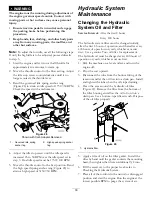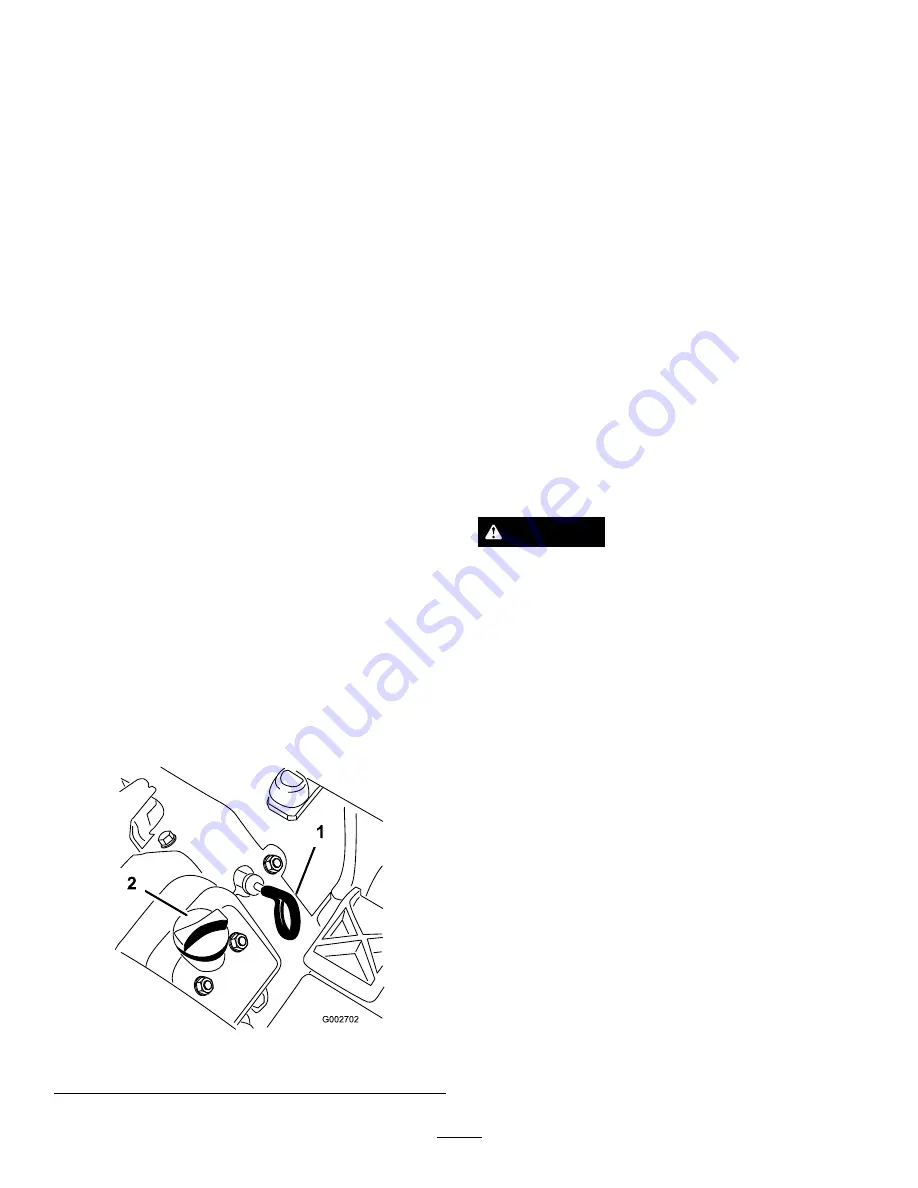
Operation
Note:
Determine the left and right sides of the
machine from the normal operating position.
Checking the Engine Oil Level
Service Interval:
Before each use or daily
The engine is shipped with oil in the crankcase;
however, the oil level must be checked before and after
the engine is first started.
Crankcase capacity is approximately 1-3/4 US quarts
(1.66 l) with the filter.
Use high-quality engine oil that meets the following
specifications:
•
API Classification Level Required: SJ, SK, SL or
higher.
•
Preferred oil: SAE 30 (above 40 degrees F)
1. Position the machine on a level surface.
2. Pivot seat rearward.
3. Pull out the dipstick (Figure 10) and wipe it with a
clean rag. Insert the dipstick into the tube and make
sure that it is seated fully. Remove the dipstick from
the tube and check the oil level. If the oil level is
low, remove the filler cap from the valve cover and
add enough oil to raise the level to the Full mark
on the dipstick.
Important:
Be sure to keep the engine oil level
between the upper and lower limits on the oil
gauge. Engine failure may occur as a result of
over filling or under filling the engine oil.
Figure 10
1.
Dipstick
2.
Oil fill cap
4. Install the dipstick firmly in place.
Important:
The dipstick must be fully seated
in the tube to provide proper sealing of the
engine crankcase. Failure to seal the crankcase
may result in engine damage.
5. Pivot the seat down.
Important:
Check the oil level every 8
operating hours or daily. Initially, change the
oil after the first 8 hours of operation; thereafter,
under normal conditions, change the oil and
filter every 50 hours. However, change the oil
more frequently when the engine is operated in
extremely dusty or dirty conditions.
Filling the Fuel Tank
Use
Unleaded
regular gasoline suitable for automotive
use (87 pump octane minimum). Leaded regular
gasoline may be used if unleaded regular is not available.
Fuel tank capacity is approximately 4-1/2 gallons
(16.1 l).
DANGER
In certain conditions, gasoline is extremely
flammable and highly explosive. A fire or explosion
from gasoline can burn you and others and can
damage property.
•
Fill the fuel tank outdoors, in an open area,
when the engine is cold. Wipe up any gasoline
that spills.
•
Never fill the fuel tank inside an enclosed trailer.
•
Do not fill the fuel tank completely full. Add
gasoline to the fuel tank until the level is 1 inch
(25 mm) below the bottom of the filler neck.
This empty space in the tank allows gasoline
to expand.
•
Never smoke when handling gasoline, and stay
away from an open flame or where gasoline
fumes may be ignited by a spark.
•
Store gasoline in an approved container and
keep it out of the reach of children. Never buy
more than a 30-day supply of gasoline.
•
Do not operate without entire exhaust system
in place and in proper working condition.
15
Summary of Contents for Sand Pro 2020
Page 33: ...Schematics Electrical Schematic Rev A 33 ...
Page 34: ...Hydraulic Schematic Rev C 34 ...
Page 35: ...Notes 35 ...

















